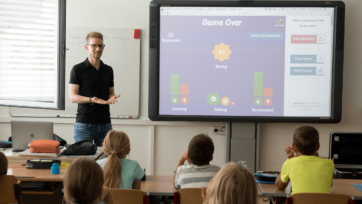Inside the modern classroom
Inside the modern classroom
Unless you’ve got kids at school, you might not be aware of how different classrooms are today.
The good news is that today’s teachers are re-examining best practice in the classroom and finding that, unsurprisingly, students make more progress when they a) have a voice in what they are learning about, and b) are not put under exhaustive amounts of stress to memorise information.
A trip to a modern-day classroom might reveal students designing and leading projects, critiquing mainstream media and using social media to launch campaigns they are passionate about – a far cry from the rote-learn-and-recall model we were used to.
In fact, schooling nowadays attempts to spark curiosity and compassion for the world students are growing up in by allowing them increased agency in what and how they study. A re-focus on 21st Century learning skills, such as collaborative thinking, creativity, media literacy, leadership and problem solving shows a closer relationship to the skills needed in modern workplaces, and demonstrates the understanding that school life should better prepare us for our futures.
As the late, great Sir Ken Robinson, bestselling author and international education advisor, said, “Our task is to educate (students) whole being so they can face the future. We may not see the future, but their will and our job is to help them make something of it.”
So what does this mean if you want to offer education programs and resources? How do you achieve the cut-through in the curriculum whilst ensuring your resources are chosen by teachers?
Modern, teacher-friendly resources and education programs need to:
- Enable students to create content not just consume it
- Provide activities that allow for students individual interests and context in their own lives
- Be flexible in delivery and fit well within the curriculum in Australian classrooms
- Allow for, and encourage, diverse learning styles, allowing every student to participate
- Work first time and be simple for teachers and students to use, taking steps to minimise planning and preparation time where possible
- Help embrace 21st Century skills and prepare students for the wider world thinking about projects and activities that might be replicated in workplaces
To read more about the future of teaching in Australia and how your resources can better support teachers download our latest infographics here.
A lot to think about, right?
You don’t have to do this on your own. Kimberlin can help work with you to guide your education program ensuring its relevance in a modern-day curriculum. Get in touch today at hello@kimberlineducation.com.au and let’s create something amazing together.






